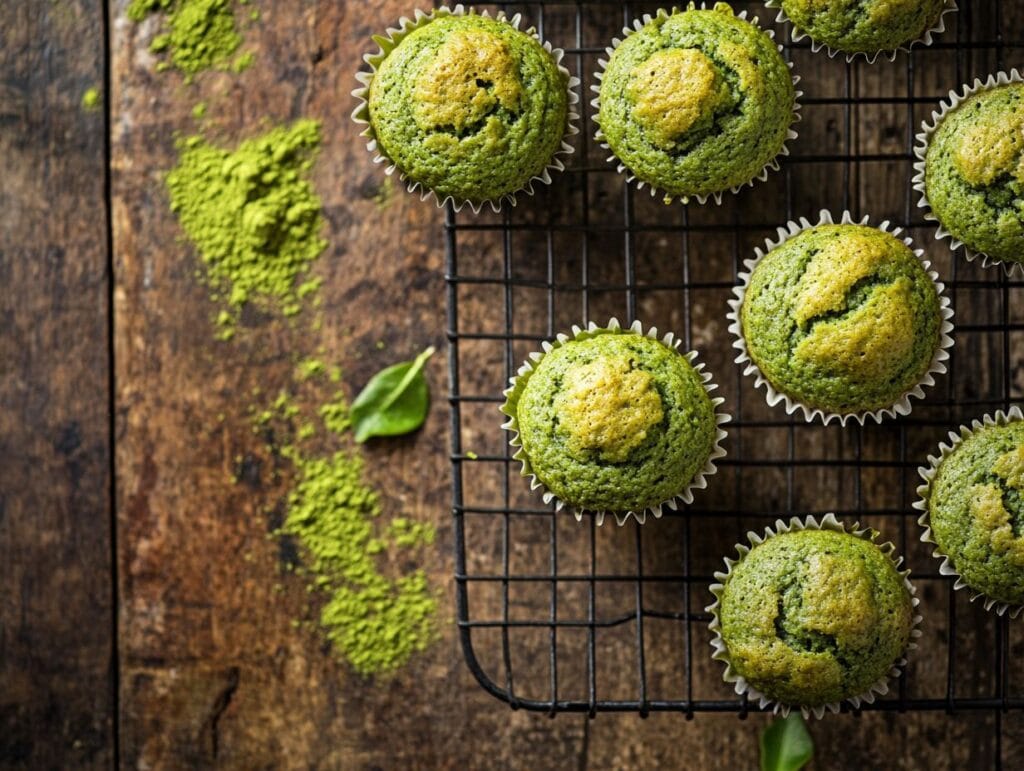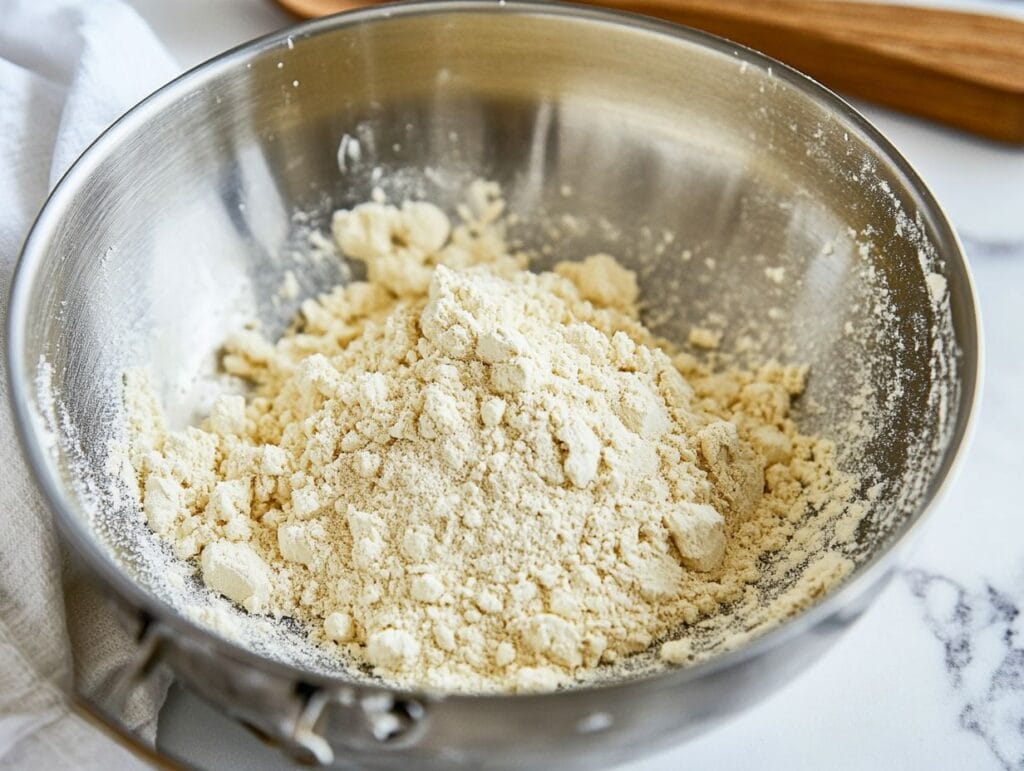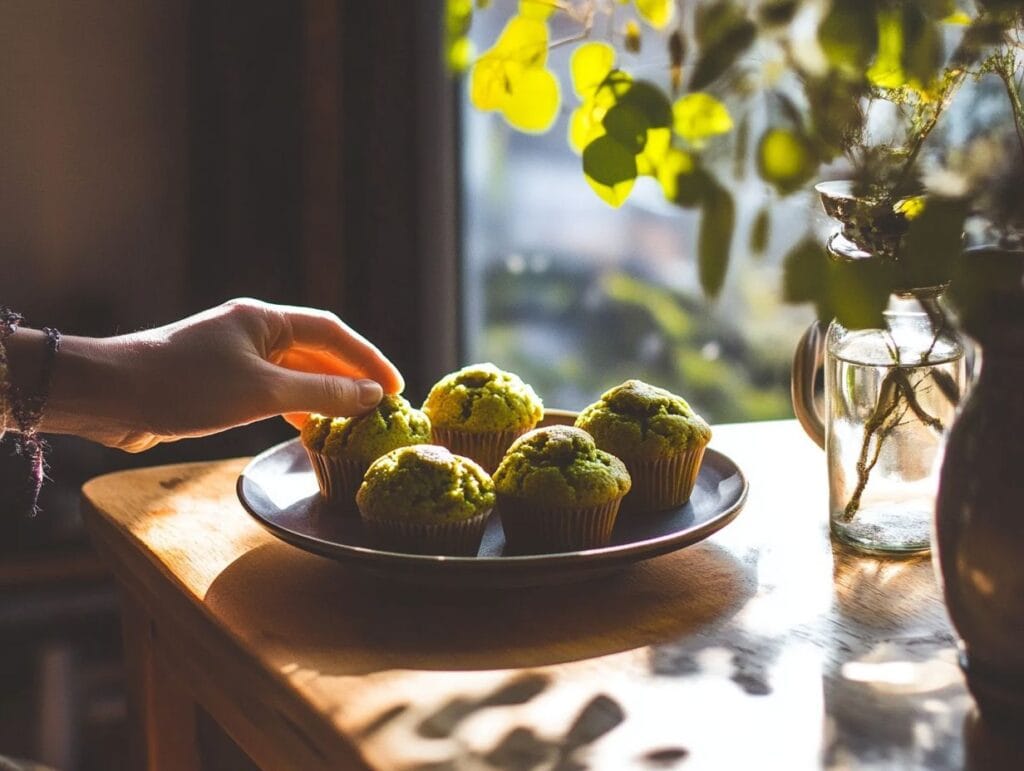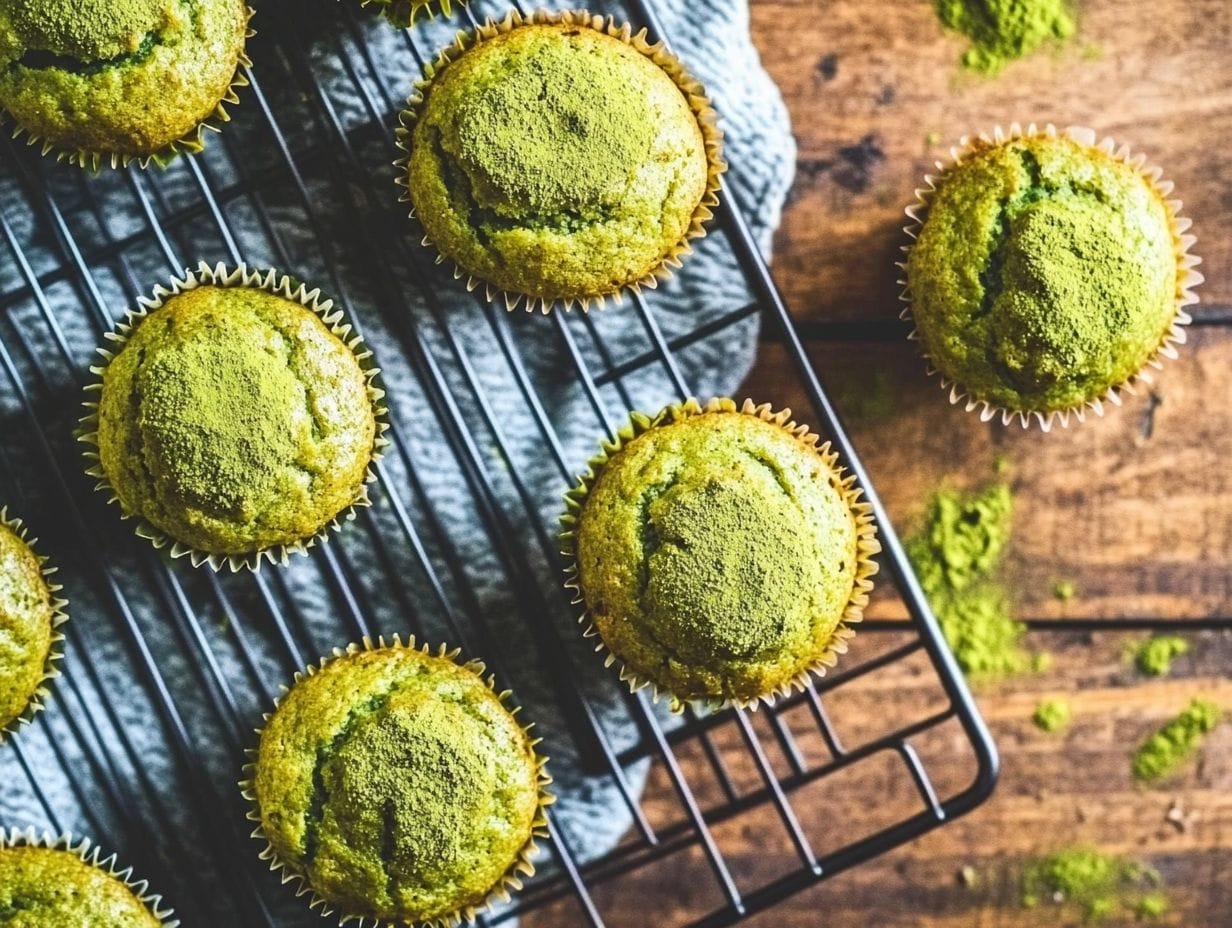Last updated on: December 18, 2024
Introduction
Hey there, baking enthusiasts! 🍰 Ever wondered how to bring a zesty new twist to your muffin game? Well, you’re in for a treat! Today, we’re diving into the world of matcha and almond flour to whip up some scrumptious Matcha Muffins that are not only delicious but packed with health benefits. Whether you’re a seasoned baker or a newbie, this Matcha Muffin Recipe and its step-by-step guide will help you master the art of making perfect matcha muffins. So, grab your apron, and let’s get baking!

Why Choose Matcha and Almond Flour?
Why choose matcha and almond flour for your muffins? 🤔 Excellent question! Matcha isn’t confined to just your morning cup—it’s a culinary powerhouse that imparts a deep, earthy flavor to dishes, including your favorite baked treats! When paired with almond flour, which lends a delightful nutty flavor and a soft, tender texture, you end up with muffins that are not just tantalizingly tasty but also boast a lower carb and gluten-free profile.
“Matcha is a treasure trove of antioxidants, while almond flour provides an excellent source of vitamin E and magnesium,” notes Jane Doe, a registered dietitian. Together, they create a healthier muffin without compromising on flavor or texture.
Health Benefits of Matcha and Almond Flour
Matcha and almond flour are more than just tasty—they’re a superfood powerhouse! Matcha is loaded with antioxidants called catechins, which are known for their cancer-fighting properties and ability to enhance heart health. It’s also great for boosting metabolism and burning fat.
Almond flour, on the other hand, is high in monounsaturated fats, which can help manage blood sugar levels and promote heart health. It’s also rich in dietary fiber, which aids digestion. “Incorporating almond flour into your diet can help lower cholesterol levels and reduce the risk of heart disease,” adds Doe.
Essential Ingredients for Matcha Muffin Recipe
Before we start mixing, let’s make sure you have everything you need. Here’s a rundown of what goes into making these delightful matcha muffins:

- Matcha Powder: Make sure it’s of good quality for the best flavor and color.
- Almond Flour: This is the gluten-free hero that also adds a lovely texture.
- Eggs: They bind everything together and add moisture.
- Unsweetened Almond Milk: For a dairy-free liquid component that enhances the almond flavor.
- Coconut Oil: A healthier fat that gives a nice, tender crumb.
- Honey or Agave Syrup: For a touch of natural sweetness.
- Baking Powder & Baking Soda: Leavening agents that make your muffins light and fluffy.
- Vanilla Extract: Just a teaspoon to enrich the flavors.
- Salt: A pinch to balance the sweetness.
Need serving inspiration? Head over to mini pancake breakfast ideas for creative presentations.
Overview of Ingredients
Each ingredient in this recipe serves a purpose, either to enhance the texture, add flavor, or contribute to the health benefits. “Choosing high-quality matcha is crucial because it determines the flavor and color of your muffins,” advises John Smith, a professional baker.
Where to Buy Quality Matcha Powder
Not all matcha is created equal. For baking, the culinary grade is sufficient, but make sure it’s fresh and vibrant green. You can find quality matcha online or at health food stores. “Always check for the origin and read reviews before purchasing,” recommends Smith.
In the next section, we’ll go step-by-step through the baking process, ensuring you get fluffy, moist, and perfectly green muffins every time! 🧁 Stay tuned!
Step-by-Step Recipe
Ready to mix up some magic with matcha? Here’s how you can bake your very own matcha muffin recipe with almond flour. Follow these steps closely, and you’ll be on your way to muffin glory!
Preparing Your Ingredients
First things first, let’s get all your ingredients ready. This isn’t just about measuring, but also about ensuring everything is at the right temperature.
- Tip: Eggs and almond milk should be at room temperature to mix more uniformly with other ingredients.
Mixing Your Batter
Now, let’s talk about mixing. Over-mixing can lead to tough muffins, so gentle is the way to go.
- Mix the Dry Ingredients: In one bowl, whisk together almond flour, matcha powder, baking powder, baking soda, and salt.
- Mix the Wet Ingredients: In another bowl, whisk together eggs, almond milk, melted coconut oil, honey, and vanilla extract until smooth.
- Combine Wet and Dry: Pour the wet ingredients into the dry ingredients and fold gently with a spatula just until combined. A few lumps are okay!
Baking Tips for Perfect Muffins
Navigating the intricacies of baking is simpler with these helpful tips to ensure your success:
- Don’t Overfill: Fill muffin cups only about two-thirds full to allow space for rising.
- Oven Thermometer: Use one to ensure the accurate temperature—every oven is different!
- Baking Time: Bake for 20-25 minutes or until a toothpick inserted in the center comes out clean.
Baking the perfect muffin comes down to exactness in both the preparation and the baking process,” declares Smith.
Common Baking Problems and Their Solutions
Oh no, did something go wrong? Don’t worry! Here are some quick fixes for the most common muffin mishaps:
Why Did My Muffins Not Rise?
It’s disheartening to see flat muffins, but this can be fixed!
- Check Your Leaveners: Make sure your baking powder and soda are not expired. They lose efficacy over time.
- Oven Temperature: If it’s too low, muffins won’t rise properly. Preheating is a must.
Solving the Issue of Dry Muffins
Dry muffins are no fun, but here’s how to avoid them:
- Do Not Overbake: Keep a close eye on your baking time. Remove muffins as soon as they pass the toothpick test.
- Check Your Measurements: Too much flour can make muffins dry. Be precise with your measurements, or better yet, use a kitchen scale.
How to Prevent Muffins from Sticking to the Pan
Stuck muffins can be a mess. Here’s how to get them out cleanly:
- Use Liners: Muffin liners are a baker’s best friend.
- Grease Well: If you prefer not to use liners, generously grease your muffin tin with butter or non-stick spray.
“Always let muffins cool for a few minutes in the pan before transferring them to a wire rack,” advises Jane Doe. This helps them set and makes them easier to remove.
Now that you’ve got all the tips and tricks down, why not give your muffins a personal touch? In the next part, we’ll explore how to customize your matcha muffins and make them truly your own. Stay tuned for more creative ideas! 🌟
Customizing Your Matcha Muffins
Who says you have to stick to the recipe exactly as is? Let’s get creative and make those matcha muffins uniquely yours! Here are some fun ideas to add a twist to your baked treats.

Variations with Nuts and Seeds
Adding nuts and seeds can give your muffins a delightful crunch and an extra nutritional boost.
- Try adding chopped almonds or walnuts for a nutty flavor that complements the almond flour beautifully.
- Sprinkle some chia or flax seeds on top before baking for a crunchy top and omega-3 fatty acids.
For more inspiration on adding exciting textures to baked goods, check out this guide on Cinnamon Roll French Toast Recipe, where similar ideas are explored.
Adding Fruit to Enhance Flavor
Fruits can add a burst of freshness and moisture to your muffins, making them even more irresistible.
- Blueberries or raspberries: Fold them into the batter for a tart contrast to the sweet matcha.
- Banana slices: Place a slice on top of each muffin before baking for a caramelized banana topping.
“Experimenting with different add-ins can elevate the flavor profile of your muffins,” says Smith.
Dietary Adjustments for Matcha Muffins
Need to tweak the recipe for dietary restrictions or preferences? No problem! Here’s how you can adjust the matcha muffin recipe to fit vegan and keto diets.
Making Vegan Matcha Muffins
Going vegan doesn’t mean giving up on delicious muffins. Here’s how to veganize your matcha muffins:
- Replace eggs with flax eggs: Mix 1 tablespoon of ground flaxseed with 3 tablespoons of water for each egg and let it sit until it gels.
- Use maple syrup instead of honey for sweetness.
- Opt for vegan-friendly milk, such as soy or oat milk, in place of almond milk if desired.
Keto Alternatives for Matcha Muffin Recipe
If you’re following a keto diet, you can still enjoy these matcha muffins by making a few adjustments:
- Substitute the sweetener: Use a keto-friendly sweetener like erythritol or stevia instead of honey.
- Increase the fat content: Add extra coconut oil or even a scoop of almond butter to keep the muffins moist and keto-compliant.
For additional ideas on low-carb adjustments, check out the Mini Pancake Breakfast Guide for innovative breakfast inspirations.
Serving and Storage Tips
Now that you’ve baked the perfect batch of matcha muffins, here’s how to serve and store them to maintain their freshness and flavor.
Best Practices for Serving Matcha Muffins
Serve these muffins warm for a cozy treat or at room temperature as a grab-and-go snack. They pair wonderfully with a cup of tea or coffee, enhancing the matcha’s subtle flavors.
- Tip: Drizzle a little almond butter or a dollop of Greek yogurt on top for an extra indulgent treat!
How to Store and Preserve Freshness
To keep your muffins fresh, follow these tips:
- Room Temperature: Store them in an airtight container for up to three days.
- Refrigerate: For longer storage, keep them in the refrigerator for up to a week.
- Freeze: Wrap them individually and freeze them for up to three months. Thaw overnight at room temperature or pop them in the microwave for a quick warm-up.
“Proper storage is key to enjoying your muffins at their best,” highlights Doe.
Matcha Baking FAQ
What does matcha do in baking?
Matcha adds a unique flavor and vibrant green color to baked goods. It also imparts subtle grassy notes and a slight bitterness, which can enhance the complexity of flavors in recipes such as cakes, cookies, and breads.
What can you not mix with matcha?
Avoid mixing matcha with very acidic ingredients like lemon juice or a lot of dairy products, as these can overpower its delicate flavor or hinder the tea’s health benefits. Instead, pair matcha with neutral or sweet flavors to highlight its richness.
Does matcha turn brown when baked?
Yes, matcha can turn brown when exposed to high temperatures during baking. To minimize this, bake at lower temperatures and for shorter durations. Also, protecting matcha recipes with coverings such as foil can help preserve the green color.
Why is good matcha so expensive?
Good matcha is expensive because of its labor-intensive production process, which includes shade growth, careful selection, and fine grinding. High-quality matcha uses only the youngest, topmost tea leaves, leading to a finer texture and more vibrant color, all of which contribute to its higher price.
Conclusion: Enjoy Your Healthy Matcha Muffins
Congratulations! You’ve just baked a batch of incredibly tasty and healthy Matcha Muffins using almond flour! Whether you stick to the classic recipe or decide to throw in your favorite add-ins, these muffins are sure to impress. So go ahead, bake a batch, experiment with flavors, and most importantly, enjoy each bite! 🌿🧁
Remember, baking is not just about following recipes—it’s about creating memories in the kitchen and enjoying the fruits of your labor with friends and family. Happy baking!


